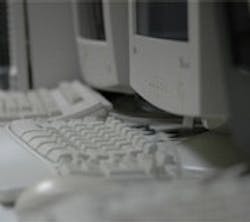A Look at PLCs, Yesterday and Today
Twenty-five years ago I was in my last year with Allen-Bradley as a PLC specialist and educator. I grew up with the 1774 PLC, the PMC. What a journey through PLC-2, PLC-3, then PLC-5, computer-based programming instead of a luggable terminal, and a 10 MB hard drive for the PLC-3 GA module used for remote data acquisition and remote programming using the RM modules.
A laptop for programming (Data General) was more than $8,000. Drive space was outrageously expensive, and Windows wasn't usable yet. PCs were making headway, and programmers learned DOS to create usable software.
From 1977 to 1985 there was a huge growth pattern that most could not have anticipated. Remote I/O, HMI, SCADA, as well as analog, allowed the PLC to encroach on the DCS world. Servo control was also available. Special keyboards configured these devices.
Bit-flipping became an art.
We had modules to do ASCII interfacing, and network modules, along with interfaces to mini-computers such as the DEC VAX and PDP-11.
Some applications were too fast for the PLCs, but not many. All was good for the PLC business and the companies and people involved.
[pullquote]In 1986, I formed my own company and got involved in the new-fangled arena of software. The life-changing decision turned out pretty well.
ICOM, Tele-Denken, GraySoft, Taylor, et al. created DOS-based PC programming software. HMI moved to PC-based, and ARCNet came to town.
But what really changed since 1985? That depends on whom you ask. Marketing vs. engineering is the battleground since hardware costs have dropped to the point of becoming commodities.
Let me set table for next month with a perspective on where we are and where we've come from.
Applications that use automation changed, but some didn't. The reasons to use automation became more enterprise-centric. That desire was there in 1985—it just wasn't easy to implement.
"Real time" has a new meaning, so access to data is paramount. It was before, but getting the data was primitive. OEMs developed and manufactured their own interfaces for gathering data for customers. We just have easier access to this data today.
Electricians successfully troubleshot the systems with fixed terminals. Documentation was found on the printed ladder. Tough to navigate, but they were successful.
Encoders, transducers, control loops and more are interfaced (then and now) with special-purpose I/O. Today, however, there are I/O buses that make remote I/O out of anything. Instead of examining a PLC's data table for loop or quantitative information, you get the data from the device itself. But the data is similar, yes?
At the risk of sounding old, I don't think much changed. ControlLogix is no different than the PLC-3 of 1980. You can use multiple scanner cards, have redundancy, use special communication cards, data acquisition, and have alternate language support. There's remote I/O, and remote programming capability exists in both.
Applications existed for client/server environments. Mainly UNIX-based, but they worked.
Then something very monumental changed the rules, changed the development cycle, and changed the operational thesis. This lifecycle/career-altering change created everything we have today. We had the goods, but only a few could implement.
The monumental shift was software. Windows 3.0, NT and IBM OS/2 Presentation Manager created a free-for-all. A little company called Wonderware took the HMI business. Because it was so easy, PLCs were targets. Ethernet landed on the plant floor, and so every PLC had to speak Ethernet.
New, and possibly improved, technology isn't necessarily a different function. A 1985 Oldsmobile and 2010 Porsche both get you to where you want to go. We do different things with data now. That requires some different "stuff," and it has been slow, painful, and has not resulted in the order of magnitude change that many are promoting.
We'll explore that next time.


